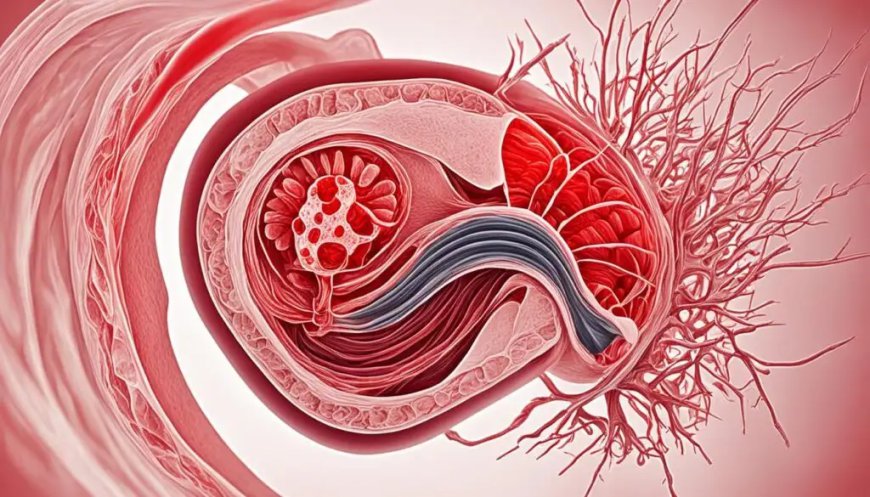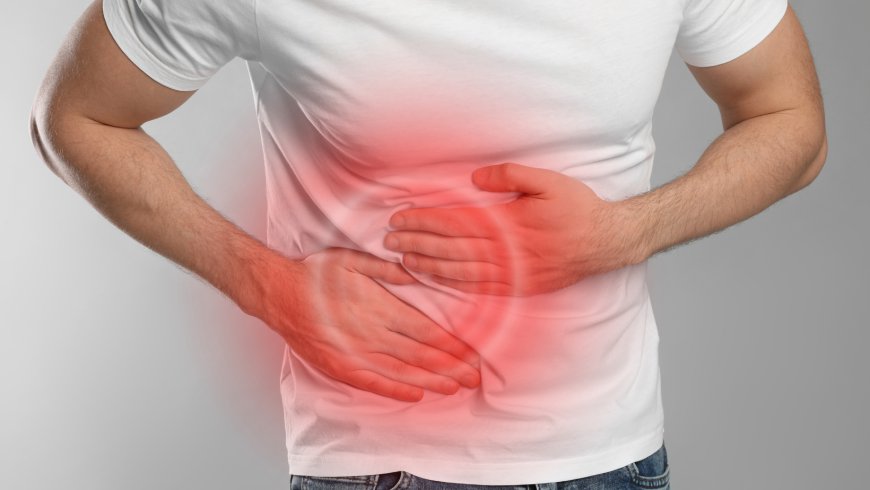Understanding Male Pelvic Pain: Causes and Concerns
Discover the various causes of male pelvic pain, including specific examples like right testicle pain and lower abdomen pain. Learn how to address and manage these symptoms effectively

Male pelvic pain can be a complex and concerning issue that affects many men. It encompasses a range of symptoms and can stem from various underlying conditions. Addressing this pain promptly and accurately is essential for maintaining overall health and well-being. This blog explores the different causes of male pelvic pain, common symptoms, and effective ways to manage this discomfort. We will also discuss specific examples, such as right testicle pain and lower abdomen pain.
Understanding Male Pelvic Pain
Male pelvic pain refers to discomfort in the lower abdomen, groin, or perineal area. This pain can be acute or chronic and might be associated with urological, gastrointestinal, or musculoskeletal issues.
Common Causes of Male Pelvic Pain
- Prostatitis
Prostatitis is inflammation of the prostate gland. It can cause pelvic pain, urinary problems, and sexual dysfunction. Bacterial infections, chronic inflammation, or nerve damage can lead to prostatitis. Symptoms often include pain in the pelvic area, lower back, and genital region, as well as painful urination and ejaculation.
- Urinary Tract Infections (UTIs)
UTIs can affect men, causing significant discomfort in the pelvic area. They occur when bacteria enter the urinary tract, leading to inflammation and pain. Symptoms include a burning sensation during urination, frequent urge to urinate, and cloudy urine.
- Hernias
Hernias occur when an internal organ or tissue pushes through a weak spot in the muscle or surrounding tissue wall. Inguinal hernias, which occur in the groin area, can cause male pelvic pain. Symptoms include a visible bulge, pain when lifting or bending, and discomfort in the lower abdomen or groin.
- Interstitial Cystitis
Also known as painful bladder syndrome, interstitial cystitis is a chronic condition that causes bladder pressure, bladder pain, and pelvic pain. The severity of symptoms varies, and the pain can range from mild to severe.
- Musculoskeletal Problems
Issues such as muscle strains, ligament injuries, or pelvic floor dysfunction can cause male pelvic pain. These problems often result from overuse, injury, or stress. Symptoms may include pain during movement, tenderness in the pelvic region, and difficulty with certain activities.
- Sexually Transmitted Infections (STIs)
STIs, including gonorrhea and chlamydia, can cause pelvic pain in men. These infections often affect the urethra or prostate, leading to pain, discharge, and urinary symptoms. Early diagnosis and treatment are crucial to prevent complications.
- Kidney Stones
Kidney stones are hard deposits of minerals and salts that form in the kidneys. They can cause severe pain when they pass through the urinary tract. Symptoms include sharp pain in the lower abdomen or groin, blood in the urine, and nausea.
- Chronic Pelvic Pain Syndrome (CPPS)
CPPS is a condition characterized by persistent pain in the pelvic area without a clear infection or inflammation. The exact cause is often unknown, but it may involve muscle tension, nerve dysfunction, or psychological factors. Symptoms include pain in the perineum, lower abdomen, and genitals, as well as urinary and sexual dysfunction.

Specific Examples: Right Testicle Pain and Lower Abdomen Pain
Right testicle pain and lower abdomen pain are common manifestations of male pelvic pain. These symptoms can be alarming and may indicate various underlying conditions.
Right Testicle Pain
Right testicle pain can result from several factors, including trauma, infection, or medical conditions like testicular torsion. It’s essential to understand the potential causes to seek appropriate treatment.
- Trauma: Direct injury to the testicles can cause significant pain and swelling. This might occur due to sports injuries, accidents, or physical activities.
- Epididymitis: Inflammation of the epididymis, the tube that stores sperm, can lead to right testicle pain. It’s often caused by bacterial infections, including sexually transmitted infections (STIs).
- Testicular Torsion: This is a medical emergency where the spermatic cord twists, cutting off blood flow to the testicle. Symptoms include sudden, severe pain in one testicle, swelling, and nausea. Immediate medical attention is necessary.
- Varicocele: Enlarged veins within the scrotum can cause a dull, aching pain, often described as a "bag of worms" sensation. This condition can affect testicular function and may require surgical intervention.
- Testicular Cancer: Although less common, testicular cancer can cause pain, swelling, or a lump in the testicle. Early detection and treatment are crucial for a positive outcome.
For more detailed information on testicular pain, visit this comprehensive guide on testicle and abdominal pain causes and relief.
Lower Abdomen Pain
Lower abdomen pain in men can arise from various gastrointestinal, urological, or musculoskeletal issues. Understanding the potential causes can help in managing the pain effectively.
- Appendicitis: Inflammation of the appendix can cause sharp pain in the lower right abdomen. Symptoms include nausea, fever, and loss of appetite. Surgical removal of the appendix is often necessary.
- Diverticulitis: This condition involves inflammation or infection of small pouches in the digestive tract, causing pain in the lower abdomen. Symptoms include abdominal pain, fever, and changes in bowel habits. A diet high in fiber and antibiotics can help manage diverticulitis.
- Irritable Bowel Syndrome (IBS): IBS is a chronic condition affecting the large intestine. Symptoms include cramping, abdominal pain, bloating, gas, and diarrhea or constipation. Stress management and dietary changes can alleviate symptoms.
- Constipation: Difficulty in passing stools can cause lower abdomen pain. It may result from a low-fiber diet, dehydration, or lack of physical activity. Increasing fiber intake and staying hydrated can help relieve constipation.
- Inguinal Hernia: A hernia in the lower abdomen can cause pain and discomfort. Symptoms include a visible bulge, pain when lifting, and a dragging sensation. Surgical repair is often required.
Diagnosis and Treatment
Diagnosing male pelvic pain involves a thorough medical history, physical examination, and diagnostic tests. Healthcare providers may perform imaging studies, blood tests, and urine tests to identify the underlying cause.
Diagnostic Approaches
- Medical History and Physical Examination: A detailed history helps identify potential causes. The physical exam may include checking for lumps, tenderness, and other abnormalities.
- Imaging Studies: Ultrasound, CT scans, or MRI can help visualize internal structures and identify issues like hernias, kidney stones, or tumors.
- Laboratory Tests: Blood and urine tests can detect infections, inflammation, or other abnormalities.
- Urodynamic Tests: These tests evaluate bladder function and can help diagnose conditions like interstitial cystitis or prostatitis.
Treatment Options
Treatment depends on the underlying cause and may include medication, lifestyle changes, or surgery.
- Medication: Antibiotics treat infections, while pain relievers and anti-inflammatory drugs can manage pain and inflammation. Alpha-blockers may be prescribed for prostatitis.
- Lifestyle Changes: Dietary modifications, stress management, and regular exercise can improve symptoms of conditions like IBS and constipation.
- Physical Therapy: For musculoskeletal issues, physical therapy can help strengthen pelvic muscles and reduce pain.
- Surgery: Conditions like hernias, appendicitis, or testicular torsion may require surgical intervention. Minimally invasive techniques can reduce recovery time and improve outcomes.
When to Seek Medical Help
It’s crucial to seek medical attention if you experience severe, persistent, or worsening pelvic pain. Sudden, sharp pain in the testicles or lower abdomen may indicate a medical emergency, such as testicular torsion or appendicitis. Early diagnosis and treatment can prevent complications and improve recovery.
Conclusion
Male pelvic pain can result from various causes, including infections, musculoskeletal issues, or gastrointestinal conditions. Understanding the potential causes and seeking appropriate treatment is essential for managing this discomfort effectively. Conditions like right testicle pain and lower abdomen pain should not be ignored, as they can indicate serious underlying problems. By addressing male pelvic pain promptly, individuals can maintain their health and well-being.
For further reading on specific conditions related to pelvic pain, such as right testicle pain and lower abdomen pain, visit this informative link.
